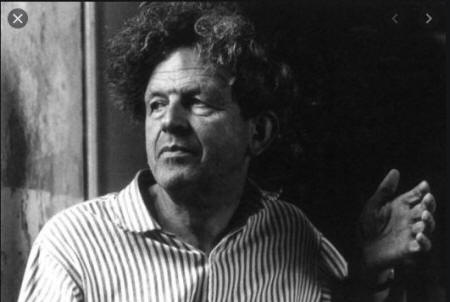

Queer Places:
University of Oxford, Oxford, Oxfordshire OX1 3PA
The Golden Plover Holiday Home & Art Gallery, North Ln, Warren, Pembroke SA71 5HR, UK
 Vincent Charles Arthur Giardelli, MBE, (11 April 1911 – 2 November 2009) was a Welsh artist of Italian paternal descent.[1][2][3]
The American painter Fairfield
Porter appears not to have been aware of any erotic attraction to
other men until a trip to Italy with his mother in the autumn of 1931. It
was in Florence that he struck up an intense friendship with Arthur
Giardelli, a youth four years his junior.
Vincent Charles Arthur Giardelli, MBE, (11 April 1911 – 2 November 2009) was a Welsh artist of Italian paternal descent.[1][2][3]
The American painter Fairfield
Porter appears not to have been aware of any erotic attraction to
other men until a trip to Italy with his mother in the autumn of 1931. It
was in Florence that he struck up an intense friendship with Arthur
Giardelli, a youth four years his junior.
Giardelli's work is held in many collections including the Tate, the National Museum of Wales, the National Library of Wales, Contemporary Art Society of Wales, Arts Council of Wales, Museum of Modern Art Wales, Brecknock Museum, Tenby Museum and Art Gallery together with museums and galleries in New York City, Dublin, Nantes, Bratislava and Prague.[1][2][4][5]
Giardelli was raised in Surrey and attended Hertford College, Oxford, where he did a degree in Modern Languages.[1][2][6] He later trained at the Ruskin School of Art, Oxford, 1930–34. He lived most of his life in Wales and was represented by the Grosvenor Gallery in London for a large part of his career. He was a friend of artists Cedric Morris, David Jones, Josef Herman and Ceri Richards. He also had international artist friends including Zoran Mušič, Olivier Debré and Fairfield Porter.[1][2]
In 1937 he married Judy Berry, and they had two children, Judith and Lawrence.
He was pro-active in bringing art into south Wales' communities: In the Second World War, Harvey Grammar School, Folkestone, where he taught, being evacuated, he became part of the Dowlais Educational Settlement Movement, and was influential in setting up the Rhondda Group. A Christian pacifist, influenced by Gandhi, he registered as a conscientious objector, leading to his dismissal as a teacher, even though he worked part-time in the National Fire Service.
Giardelli first began to take his art seriously in the 1940s, when he arrived in Merthyr Tydfil, where he first met Cedric Morris and Heinz Koppel who both encouraged him. The nearby Quaker educational settlement at Trewern House housed him and his family. Judy was an outstanding pianist and gave recitals while Giardelli played the viola and talked about the music. He taught art history for the Workers' Educational Association and, later, music at Cyfarthfa Castle grammar school. The town had an immediate impact on Giardelli; he once told poet Meic Stephens that "when the train finally pulled into Merthyr, I felt I'd come home".[2] Giardelli felt he had to constantly draw, paint and create and feared a world where his creative practice wasn't part of his life. He said "If I don't paint for a month, I may give it up for ever, so the constant challenge is that you must keep working. You must paint. You must draw. It's like speaking".[9][10] Giardelli used watercolours and found materials, including shells and driftwood. He was perhaps best known for his abstract relief constructions inspired by nature and the seasons.[1][2] Conversely he was also inspired by Modernist artists including Piet Mondrian.[11]
In the late 1940s the family first settled in Pendine, Carmarthenshire, where they established a guesthouse and a school for foreign students. He eventually settled in Warren, Pembrokeshire, with his second wife, artist Bim Giardelli, where his home 'The Golden Plover', a former schoolhouse, became his studio and the gallery for his extensive collection of modern, European art. In 1948 Arthur Giardelli was one of the founders of the South Wales Group[7] (which later became The Welsh Group) and the 56 Group Wales, of which he became president towards the end of his life. He was also on the committee of the Contemporary Art Society for Wales and on the Welsh Arts Council.[1] He helped found the University Art Collection at Aberystwyth.[1][2][8]
My published books: